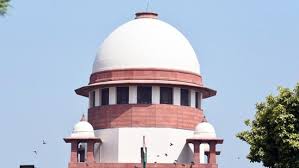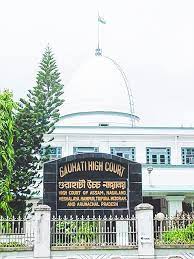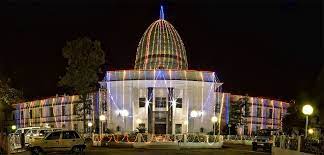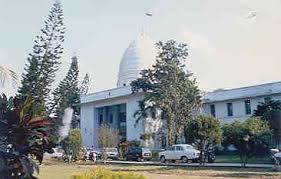This story of the prosecution is belied by the fact, as has come on record through the evidence led by the prosecution, that the haveli of Gian Singh was under construction where regular activity was going on. Labour was working there throughout the day. Coupled with the fact that it was the case of the prosecutrix herself that the accused party belonged to the opposite group in the village. The trial court did not find any case made out against Gian Singh in whose haveli, the prosecutrix had allegedly stayed for two days, out of which on one day, she was allegedly raped by Gian Singh, owner of the haveli. The acquittal of Gian Singh has broken the chain of events and falsified the story projected by the prosecutrix. (Para 12)
Now coming to the evidence lead against the appellants. It is the case of the prosecution itself that the room in which the prosecutrix was allegedly detained and raped for two days by three persons is located in an under-construction haveli of Gian Singh where labour was working throughout the day. Despite this fact, the prosecutrix did not raise any alarm. The stand of the prosecutrix in her statement was that she neither drank water, nor had she eaten anything for three days. She remained in the illegal custody of the accused and was raped repeatedly for three days, against her wishes. When considered in the light of her medical examination, the said statement is falsified as the doctor noted that she was well-built and well-nourished. (Para 13)
The statement of the prosecutrix that she was raped throughout the day in open in a field where ‘Bajra’ crop was standing, is not found to be plausible or persuasive. As per the evidence led by the prosecution, the ‘Bajra’ field was adjoining the haveli of Gian Singh, where construction activity was going on at the level of the first floor and the area all around was visible. If any such incident had taken place, the prosecutrix being in an open field, could have very well raised an alarm. (Para 14)
The room where the offence was allegedly committed, is within the compound of an under construction kothi (haveli) of Gian Singh as it is evident from the site plan (Exhibit PD) produced by the prosecution. The story of the prosecutrix is further demolished as her claim was that she could recognise the place only after she saw Gian Singh in the morning when he had come there to offer her tea. Gian Singh’s involvement in the crime has been disbelieved by the Trial Court while recording his acquittal. The order was not challenged further. Para 15)
Further in the evidence of the prosecution, a major discrepancy found in the statements of the prosecutrix as well as her mother is with reference to handing over the clothes of the prosecutrix to the police. The prosecutrix had stated that she had handed over her salwar & kameez (shirt) to the police which had stains of semen, whereas her mother, (Bakshish Kaur)-PW6, while testifying had stated that she had handed over the clothes of the prosecutrix to Sadhu Singh who in turn had given them to the police. Sadhu Singh has not been produced in the evidence by the prosecution. (Para 16)
Admittedly, the prosecutrix had returned home in the evening of 24.07.96, however, the FIR was got registered in the evening of 25.07.96 and she was taken for medical examination a day after, on 26.7.96, at 01.00 pm. From the statement of the doctor, Renu Kumari (PW1) who examined the prosecutrix (PW4), the claim of the prosecutrix is further belied. The prosecutrix’s stand is that she was raped repeatedly from the night of 22.07.1996 till the evening of July 24, 1996, by three different persons, firstly, in a room with no bedding and secondly, in a field of ‘Bajra’ crop with no bedsheet or anything. However, no external/internal injury was found on her body and even on her private parts. The doctor, Renu Kumari (PW1) opined that the prosecutrix was well built and well nourished. She further stated that the prosecutrix was used to sexual intercourse. This is not to say that the version of a victim of a sexual offence ought to be disbelieved only because she has had an active sexual life. In the instant case, the surrounding circumstances pointed out above, discredit the version of the prosecutrix. (Para 17)
Though in the chemical examiner’s report, it had come that the clothes of the prosecutrix handed over to the police were having stains of semen, however, no scientific evidence was produced to link the same with the accused. This issue gains importance in the light of the fact that a part of the story sought to be projected by the prosecutrix, had already been disbelieved by the Trial Court with the acquittal of the Gian Singh. It has not been pointed out from the record, that the clothes which were handed over to the police station, belonged to the prosecutrix. More so when there are two different versions with reference to the manner of handing over the clothes of the prosecutrix to the police. (Para 18)
There are several material discrepancies even in the statement of the mother of the prosecutrix, Bakshish Kaur (PW6) who stated that after her daughter did not return back on 22.07.1996, she had informed Rattan Chand (DW2), sarpanch of the village, who also made efforts to search her daughter. However, when Rattan Chand appeared in court as DW-2, he completely denied this fact. (Para 19)
Further, on going through the evidence led by the prosecution, the findings returned by the trial court are found to be completely perverse. It is so stated by the prosecutrix in the FIR that about 5 months back, her father had a quarrel with Avtar Singh (also called Tari) and others. To take the revenge, Avtar Singh, Gian Singh and Sohan Lal had committed rape on her. Gian Singh was acquitted by the trial court noticing the stand of the prosecutrix that there was party faction in the village and both the parties belonged to different sections. The same reasoning will apply to the appellants as well for the reason that in the FIR, the stand taken by the prosecutrix is same in respect of all the accused, as far as the allegation of party faction is concerned. (Para 20)
In view of the aforesaid discussion, we are of the opinion that there was no evidence brought on record to connect the present appellants with the offence. The appeal is accordingly allowed and the judgments of both the courts below are set aside. (Para 21)
SUPREME COURT JUDGMENT
2023 STPL(Web) 130 SC
Avtar Singh & Anr. Appellants Vs. State of Punjab Respondents
Criminal Appeal No. 1050 of 2013-Decided on 2-8-2023
https://stpllaw.in/wp-content/uploads/2023/08/2023-STPLWeb-130-SC.pdf







